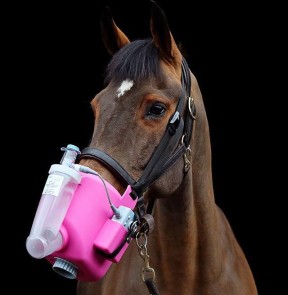
Breathing strategy of the adult horse.
It has been said that horses use a different breathing strategy than other mammals and humans, therefore this study investigates the mechanism underlying the polyphasic airflow pattern in horses.
Nine healthy horses were tested at rest with an airtight mask that left the nostrils unobstructed as well as EMG. The parameters measured were airflow, tidal volume, rib cage and abdominal motion, and the sequence of activation of the diaphragm, intercostal, and abdominal muscles during quiet breathing.
The results from the tidal flow-volume shows that, unlike humans, the horse at rest breathes around, rather than from, the relaxed volume of the respiratory system. Furthermore, the changes and pattern in electromyographic activities in pressure during the breathing cycle show that just like in humans the first part of expiration is passive, while the subsequent active deflation is responsive for the active expiration. This shows that the abdominal muscles appear to share the main pumping duties with the diaphragm.
Therefore, we can conclude that there is a passive and active phase to both inspiration and expiration due to the coordinated action of the respiratory pump muscles responsible for the resting adult horse's biphasic inspiratory and expiratory airflow pattern.
Expert opinion by Els Smet
The author of the article deems that adoption of this breathing strategy by the horse may relate to its peculiar thoracoabdominal anatomic arrangement and to its very low passive chest wall compliance, as well as minimizing the high elastic work of breathing.
> From: Koterba et al., Journal of Applied Physiology 64 (1988) 337-346. All rights reserved to American Physiological Society. Click here for the online summary.


